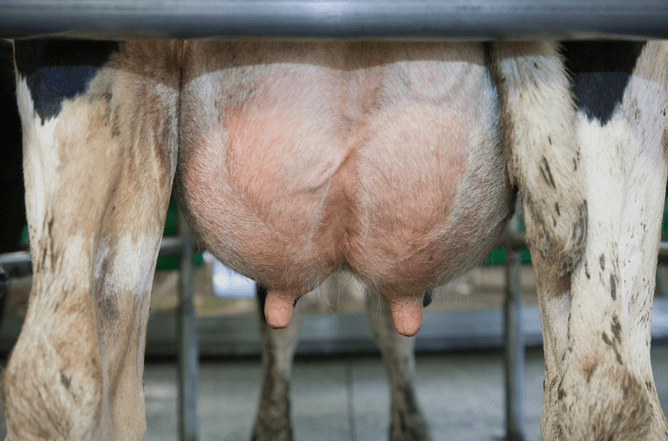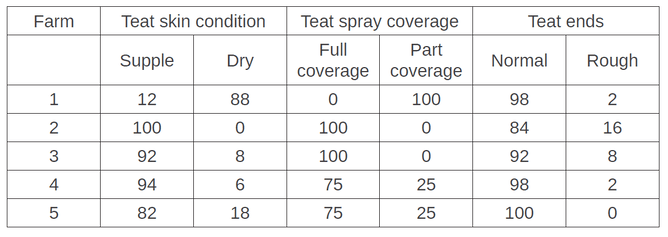Maintaining a Bulk Milk Somatic Cell Count (BMSCC) under 150,000 cells/ml is a sign of a healthy productive herd. To keep BMSCC down, there needs to be low levels of mastitis in the herd.
Mastitis is the end result of complex interactions between the cow, bacteria, the environment, milking machine and the farmer. The aim of mastitis control is to limit the number of bacteria on the cow’s teats and to reduce the risk of bacteria entering the udder through the teat canal.
Checking (or ‘scoring’) a cow’s teats is a great place to start. If we can ensure all cows in the herd have great teat skin condition, through good teat spraying and minimal damage to the teat-ends, then we are a long way to producing more milk of higher quality.
On-farm example
Here is an example of a corporate farming group that undertook teat scoring on all its farms. Teats were assessed in early lactation, allowing the vets to make timely recommendations that the farm team could action straight away, rather than waiting until dry off. Depending on the farm, the recommended actions included alterations to teat spray coverage, increasing levels of emollient in the teat spray mix, or reducing over-milking by getting cups off earlier.
Once the actions were implemented, and following a good drying off programme, the average BMSCC across the 5 farms dropped from 200,000 in the 2021/22 season to 130,000 in the 2022/23 season.
Based on 5,520 cows averaging 400kgMS/year and a $7 payout, the 'cost of mastitis calculator' shows this is worth a whopping $174,000 in increased production* plus the added benefit of fewer mastitis treatments, less antibiotics used and less time dealing with mastitis cases. That’s an amazing payback benefiting everyone - especially the cows!
Vets are trained to assess teats and perform teat scoring during mastitis investigation. However, if you want to get an idea of the teat health on your farm, assessing 50 cows’ teat skin condition and teat-end damage in early, mid and late lactation can give an early indicator of problems.
AgriHealth has a great teat scoring chart that can be used to assess and track progress (see below).
The targets are:
teat skin condition >90% supple
teat end damage > 80% normal.
If your results are below target, ask your KeyVet for pointers on rectifying possible causes.
Sources: AgriHealth, DairyNZ



